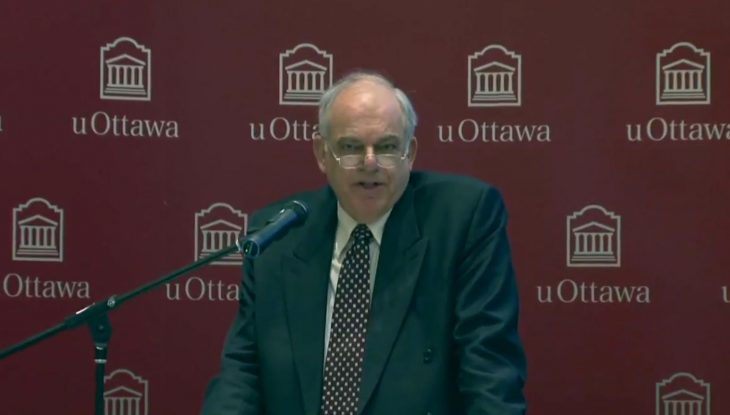
By Konrad von Finckenstein, former chair of the CRTC
The passage of C-18 seems certain to lead to a confrontation, lengthy litigation and probable impasse between Google and Meta on one side and the federal government on the other.
One way to resolve the issue might be to borrow a page from Australia. That country enacted an Act similar to C-18, the News Media and Digital Platforms Mandatory Bargaining Code Act 2021, but it only applies to companies designated by the minister. While its Act is in force, no such designation was ever made as the industry and Google and Meta struck a private deal. As long as that deal is in place, no designation will be made and the Act hangs like a sword of Damocles over the digital platforms.
Given the professed willingness by both platforms to pay into a fund to support newsmakers, the federal government could hold off proclaiming C-18 in force and instead follow a route similar to the successful methodology it chose to establish the Commission for Complaints for Telecom-television Services.
In 2007, when the telecom market was deregulated, the government by order-in-council tasked the CRTC to work with the industry to set up an independent consumer agency (later called the CTTS) to deal with consumer complaints regarding deregulated telecom services. The agency is funded by telecom carriers and has an independent board on which non-telecom carriers have a majority.
It has proved remarkably successful, and now also deals with television complaints.
The is no reason why an order in council based on this precedent could not be issued with respect to support of eligible news businesses (ENB) by digital news intermediaries (DNI).
The order would ask the CRTC to task the ENBs to set up a non-profit corporation which will
- have a board that would consist of a majority of independent directors but also include an equal number of DNI and ENB representatives
- have the authority to create a fund (eg. Journalism Fund ‘JF’) into which DNIs would pay a certain percentage of their Canadian revenue
- establish rules regarding the distribution of money from the JF to ENBs on a basis of a definite amount per capita of journalists employed by an ENB
- set up criteria for establishing whether a person qualifies as an employed journalist
The order would further ask the CRTC to
- Approve the terms and conditions of the non-profit corporation referred to above
- Determine the DNIs to which it applies (using the criteria of C-18)
- Identify ENBs (using the criteria of C-18)
- Conduct a hearing to determine the amount of annual revenue a DNI needs to pay into the JF.
C-18 gives the CRTC enough discretionary power to do all of the above. This could be done in a relatively short time, funds would flow into the JF and be distributed to Canadian ENFs on the basis of how many journalists they employ.
The CRTC would be largely left out of the picture and Canadians would enjoy good journalistic news coverage. C-18 would never be proclaimed but would be a potential tool to deploy if things go awry.
Cartt accepts commentary from informed observers of the telecommunications and broadcasting industry. The views reflected in these pieces do not necessarily reflect the views of Cartt. Pieces for consideration should be sent to editorial@cartt.ca.



